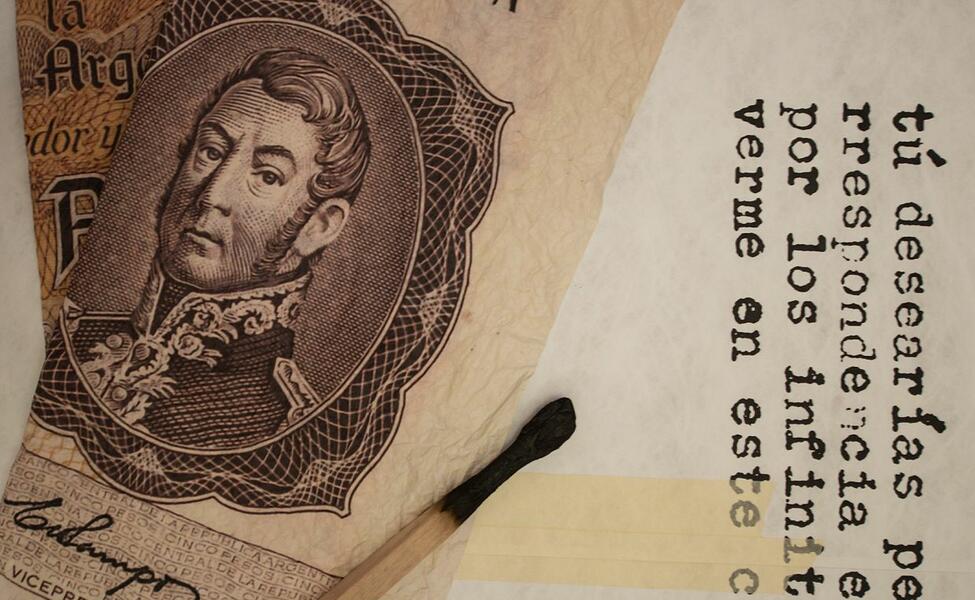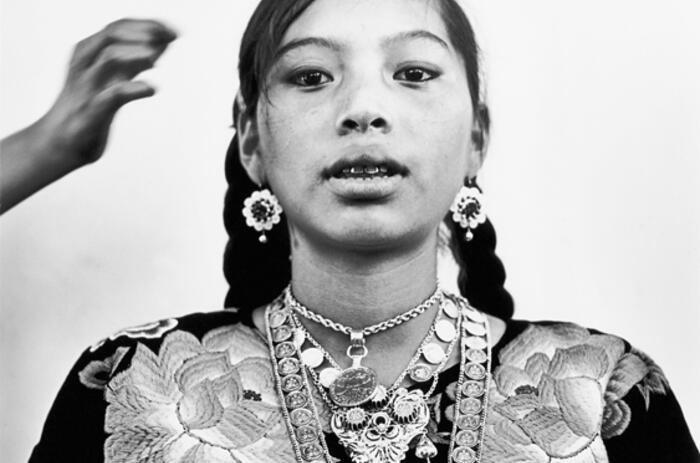"A COLLECTION, TWO LETTERS AND A METEOR" AT THE NATIONAL MUSEUM OF FINE ARTS
On February 16th, the exhibition "Una colección, dos cartas y un meteoro" (A Collection, Two Letters and a Meteor) was inaugurated at the Museo Nacional de Bellas Artes (Buenos Aires) with the work of artist Cristian Segura and curatorship by art historian María Guadalupe Suasnábar. The exhibition revalues the sculpture Météore (1981) by Alicia Penalba (San Pedro, 1913-París, 1982) through an installation by Segura (Tandil, 1976) about the letters exchanged between Penalba and those responsible for the Torcuato Di Tella Institute between 1961 and 1962.

At that time, the Di Tella Institute invited Penalba to exhibit as guest of honour, trying to coincide with the presentation of the 1962 Sculpture Prize. The artist had lived in Paris since 1948 and had just established herself internationally at the São Paulo Biennial. Penalba's letter installed by Segura reflects the artist's disappointment at having to give up the invitation: "I have to give up" and "Everything is against me," she admitted. "How much I regret not being able to participate in this Award, which would have been my first as an artist with my country," she wrote in the letter. Penalba will die in 1982 without having had a solo show in Argentina. It was not until 1993 that her first exhibition took place in the country, at the Rubbers gallery in Buenos Aires. And in 2016, at the Museum of Latin American Art in Buenos Aires (MALBA), the first anthological exhibition of the artist in a museum.
At the MNBA, the artist is represented by her work Météore: the only work by a female artist present in the 27-piece collection that the Argentine filmmaker and feminist María Luisa Bemberg donated in 1995, shortly before her death. But it is also the only work by Penalba present in a national museum. As a unique object, which comes from another world, Alicia Penalba is inserted in the Bemberg Collection ans surrounded by emblematic modern works and artists from the River Plate region. Metéore imposes itself in the middle of the room, not as the daughter or heiress of those "masters", but as the custodian of a future of Latin American arts; Sentinel of journeys, dialogues, speeches and circulations of the image and the word.
The proposed installation not only establishes a dialogue with Penalba's work, esteeming her presence, but also with the space as a territory of legitimation and safeguarding of a national heritage in which the artist is inscribed, even today, timidly; also questioning how these mechanisms operate. Likewise, it debates her modest presence in the historiography of Argentine art and the few echoes of a personality and a discourse of formidable power.
Cristian Segura (1976) lives and works in Tandil, Province of Buenos Aires. He investigates museum issues and the operations implicit in practice, such as the development of collecting and archiving, from the institutional point of view and with a critical eye. Since he directed the Museum of Fine Arts in Tandil when he was only 23 years old, he identified a focus of interest that he developed in numerous solo exhibitions around the world.
His work has been exhibited in institutions in Argentina, Chile, Bolivia, Peru, Brazil, Uruguay, Cuba, Colombia, Mexico, the United States, Portugal, Spain and Italy. His works can also be found in several public and private collections, such as the Carrillo Gil Museum of Art in Mexico City, the Juan B. Castagnino+Macro Museum in Rosario, the Bahía Blanca Museum of Contemporary Art, the Museo del Barro de Paraguay, the La Moneda Cultural Center Documentation Center, in Chile, the OSDE Foundation, among others.
Segura represented Argentina at the I Triennial of Chile, which featured Ticio Escobar as curator; at the 6th VentoSul Biennial of Curitiba (with Escobar and Alfons Hug as curators) and at the 11th Havana Biennial, curated by Jorge Fernández Torres.
His various recognitions include the First Prize of the Biennial of the Museum of Contemporary Art of Bahía Blanca, the Second National Prize of the OSDE Foundation, Mention at the National Hall of Visual Arts, Mention at the Itaú Prize, Mention at the National Hall of the Museum of contemporary art in Rosario and the Rosa Galisteo at the Rodríguez Provincial Museum of Fine Arts in Santa Fe. He received scholarships from the Antorchas Foundation, the National Fund for the Arts, the Spanish Cultural Center in Buenos Aires, and participated in project development and residencies at Espacio Fundación Telefónica (Buenos Aires), Hangar (Barcelona), Batiscafo (Havana) and Thyssen-Bornemisza Museum (Madrid).
Maria Guadalupe Suasnabar (1982) lives and works in Tandil, Province of Buenos Aires. She has a doctorate in History (Mention in Art History) and a Master's in History of Argentine and Latin American Art from the Institute of Higher Social Studies (IDAES) of the National University of San Martín, specializing in the history of artistic institutions in the 20th century.
She is a professor and researcher at the National University of the Center of the Province of Buenos Aires (UNICEN), at the Faculty of Art, the Faculty of Human Sciences and the Ernesto Sabato National School. She is coordinator of the Audiovisual Documentation and Archive Center of the Institute of Scenographic Studies (INDEES) belonging to the Center for Dramatic Research of the Faculty of Art (UNICEN).
Suasnabar is the author of several essays on the moments of creation of municipal museums and academies of fine arts in the first half of the 20th century, presented at International and National Congresses and Conferences on Theory and History of Arts. She has been a fellow of the National Council for Scientific and Technical Research (CONICET), the Scientific Research Commission of the Province of Buenos Aires (CIC-PBA), the National Fund for the Arts and the National Theater Institute. Since 2014 she has been a member of the Argentine Center for Researchers in the Arts (CAIA) and currently coordinates, together with colleagues from Tandil, the project "Laboratorio de Imaginarios Bonaerenses", with the support of the National Fund for the Arts for artists from the Province of Buenos Aires.
Una colección, dos cartas y un meteoro
Cristian Segura (Tandil, 1976) and Alicia Penalba (San Pedro, 1913-Paris, 1982)
Curator: Maria Guadalupe Suasnabar
Museo Nacional de Bellas Artes, Sala 27, Colección María Luisa Bemberg ( Av. del Libertador 1473 - Buenos Aires)
This exhibition is part of the Activate Heritage Program, under the National Ministry of Culture which promotes cultural projects and initiatives that involve the heritage of national museums and institutes, expanding visibility and access to cultural heritage.







